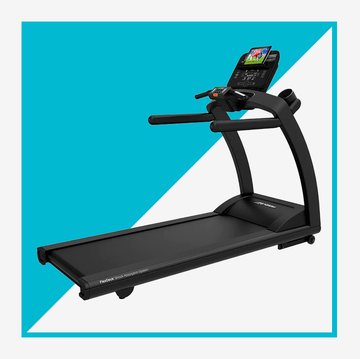Getting in peak shape is a tricky dance for endurance athletes. It’s often thought that if you push too hard, too often, you risk burning out or injuring yourself. And if you take it too easy, too frequently, you chance running out of steam before the finish line. This jig between the two extremes can leave you in the fuzzy middle ground—rarely going easy or hard—where improvement never happens.
However, a growing trend called polarized training puts the kibosh on the middle. It’s a new approach in which a majority of your workouts are either easy or very hard.
The reason it works: Low-intensity training reduce your overall load, and allows you to work harder on high-intensity days, says Neal Henderson, C.S.C.S., owner of APEX Coaching & Consulting in Boulder, Colorado, and former researcher at the Boulder Center for Sports Science Medicine. Think about it this way: “If you never truly rest, you can never truly go hard,” says Henderson.
He admits it’s difficult to convince runners that if they want to get faster, they have to go easy, too. But the results speak for themselves. In a study from Spain, runners who trained this way improved their 10K times by 5 percent. On the other hand, runners who did moderate training only bettered their times by 3.6 percent.
In another study, Austrian researchers found that elite endurance athletes who did 9 weeks of polarized training showed greater gains in VO2-max—the total amount of oxygen you consume—and time to exhaustion than athletes who completed more standard protocols of interval training and high-volume training.
Plus, the more you work your body at an easy aerobic level, the better your body gets at metabolizing fat as a fuel source during endurance events, says Henderson. This means you’re able to hold onto your carbohydrate stores more efficiently, which is crucial when you’re pushing toward the finish line. You only have a finite amount of carbohydrates to use as fuel. Once you use them up, you hit a wall. So the longer you can go before using them, the longer you can run full throttle. Moderate training can’t do that.
PUT IT INTO PRACTICE
Divide your weekly training sessions into two or three days of longer, relaxed aerobic workouts, one day of short-interval training, and one day of moderate-length, faster-paced work, Henderson advises. Or, to put it another way, portion your weekly routine into 75 percent easy, 15 percent hard, and 10 percent moderate sessions. Plan out your training so an easy day always follows a hard day.
Easy Days
On an exertion scale, keep your intensity around a 4 or 5. “If you can't talk you're not at a true steady-state aerobic level,” says Henderson. One weekly training session can be a little longer in length, but maintain that low intensity during all three workouts.
Hard Day
Warm up, and then do short, high-intensity intervals. Perform a 30-second sprint at 85 to 90 percent effort, and then rest for 30 seconds. That’s one round. Do 6 to 8 rounds.
When you factor in the warmup, recovery, and cool down for this workout, the amount of high-intensity work you’re doing is relatively low, says Henderson. But you’re stressing the body just enough to elicit positive changes.
Moderate Day
Perform only one session in a moderate threshold level, going no harder than your half-marathon pace for no longer than an hour.












